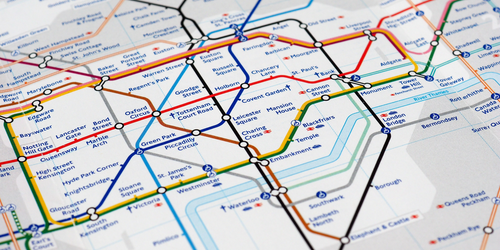A team of researchers in Italy have successfully developed a model based on network theory that accurately replicates the intricate structures found in urban transportation systems, such as London’s Underground subway system. By mapping an urban area’s spatial characteristics onto a lattice of interconnected nodes, the model generates a transportation network with varying connection weights to simulate travel times between nodes.
The optimization process accounts for realistic human travel behaviors and traffic congestion, resulting in a system that closely resembles actual subway systems. The researchers used data on population density and amenities in Greater London to demonstrate the effectiveness of their model in generating an optimized subway system for the region. The results showed striking similarities between the system generated by the model and the actual London Underground, highlighting its potential for urban planning purposes.
This study showcases how network theory can be used to replicate complex urban transportation structures. The researchers incorporated realistic travel behaviors and traffic congestion effects into their model, creating a valuable tool for urban planners to optimize existing networks and design efficient transportation systems. The ability of this model to generate systems that closely resemble real-world examples demonstrates its potential for enhancing urban planning efforts and improving overall transportation efficiency. As such, this study suggests that this model could be extended to other cities to aid in optimizing transportation networks and enhancing urban development.



